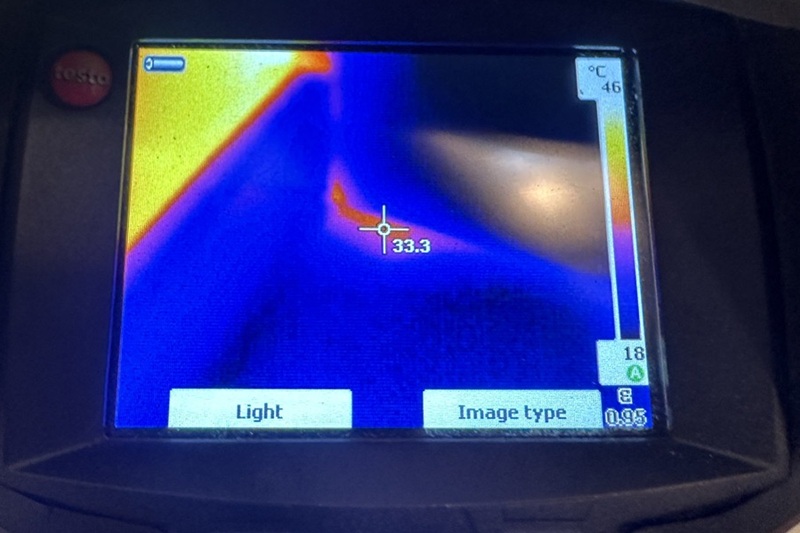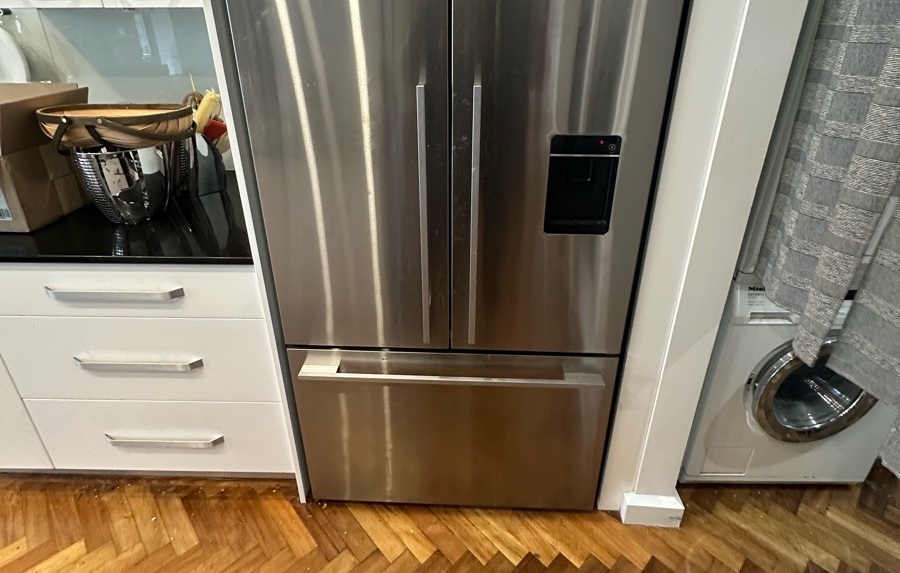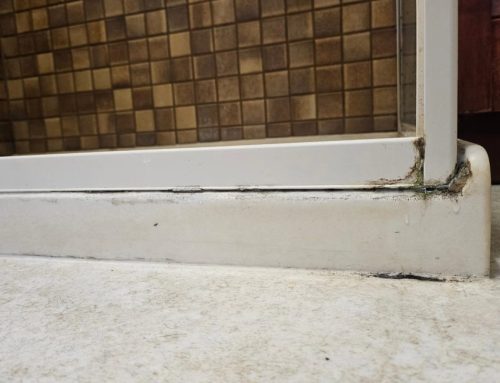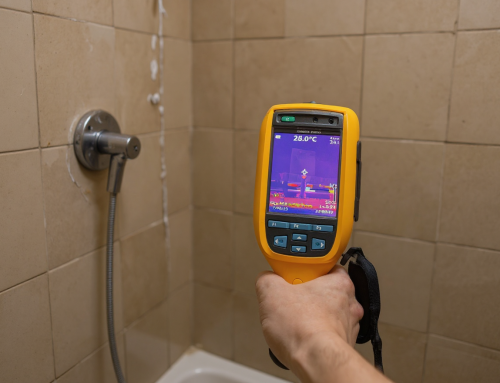Water leaks in your home can be a real headache, often hiding where you can’t see them until the damage is done. You might be wondering if there’s a better way to find these sneaky problems without ripping up your house. Thermal imaging is one of those advanced tools people talk about for spotting leaks. But is it really worth the cost? Let’s take a look at how it works and if it’s the right choice for you.
Key Takeaways
- Thermal imaging uses infrared cameras to detect temperature differences caused by moisture, making hidden leaks visible.
- It’s a non-destructive method, meaning it doesn’t require damaging your property to find the leak’s source.
- This technology can quickly pinpoint leaks behind walls, under floors, or in ceilings, saving time and effort.
- While effective, thermal imaging works best with noticeable temperature contrasts and might miss very small or condensation-related moisture.
- The investment in thermal imaging for leak detection can prevent more significant water damage and costly repairs in the long run.
Understanding Thermal Imaging Technology
Thermal imaging technology might sound a bit like science fiction, but it’s actually a very practical tool, especially when you’re trying to figure out where water might be hiding in your home. At its core, a thermal imaging camera works by detecting infrared radiation, which is essentially heat energy that all objects give off. You can’t see this radiation with your own eyes, but the camera can. It translates these invisible heat signatures into a visual image, often displayed with a spectrum of colours. Think of it like this: different colours on the screen represent different temperatures.

How Thermal Cameras Work
These cameras don’t see the world like your regular camera does. Instead of capturing visible light reflected off objects, they capture the infrared light emitted by them. Every object with a temperature above absolute zero radiates thermal energy. The camera’s sensor picks up this energy, and its internal processor converts it into a visual representation. This process allows you to see temperature variations across surfaces. For instance, a warmer area might appear as red or orange, while a cooler area could be blue or purple. This ability to visualise temperature differences is what makes thermal imaging so useful for spotting issues that aren’t immediately obvious.
Infrared Radiation and Temperature Differences
Infrared radiation is a part of the electromagnetic spectrum that we feel as heat. When a thermal imaging camera is used for leak detection, it’s looking for subtle changes in surface temperature. Water, especially when it’s evaporating, can cause a cooling effect on the materials it touches. This is because evaporation is a process that requires energy, and it draws that energy (in the form of heat) from its surroundings. So, if there’s a hidden leak, the area around it might be slightly cooler than the surrounding dry materials. The thermal camera can pick up this temperature variation, even if it’s just a degree or two, and highlight it on the display. This allows for the identification of moisture intrusion that would otherwise be invisible to the naked eye and undetectable by simple touch.
How Thermal Imaging Detects Water Leaks
Temperature Variations Caused by Moisture
Thermal imaging cameras work by detecting infrared radiation, which is essentially heat. When water is present where it shouldn’t be, it often causes a change in the surface temperature of the materials it contacts. Think of it like this: when something is wet, it tends to feel cooler than its dry surroundings, right? This is due to evaporative cooling. A thermal camera can see these subtle temperature differences, making them a fantastic tool for locating leaks.
When water leaks from a pipe, for instance, it can cool the surrounding wall or floor. A thermal camera will pick up this cooler area and display it as a different colour on its screen, effectively highlighting the problem zone. Conversely, if a hot water pipe is leaking, the moisture might appear as a warmer area. This ability to visualise temperature anomalies is what makes thermal imaging so effective for finding hidden moisture.
Identifying Hidden Leaks Behind Walls and Ceilings
One of the biggest advantages of using thermal imaging is its non-invasive nature. You don’t need to start ripping open walls or ceilings to find a leak. The camera can often see through finishes to detect the moisture hidden beneath. This is particularly useful in areas that are difficult to access, like behind plasterboard, under floorboards, or within ceiling cavities.
Here’s a simplified look at how it works:
- Detection: The camera captures infrared light emitted by all objects.
- Interpretation: Differences in temperature, often caused by moisture, are translated into a visual spectrum of colours.
- Identification: Cooler areas (indicating moisture) stand out against warmer, dry backgrounds.
This technology acts like a specialised water leak detector, allowing professionals to pinpoint the exact location of a leak without causing unnecessary damage. It’s a bit like having X-ray vision for moisture. While it doesn’t tell you precisely how a smart water leak plumber works, it certainly helps them find the problem area much faster, saving you time and money on exploratory demolition.
Benefits of Using Thermal Imaging for Leak Detection
When you’re dealing with a suspected water leak, the thought of tearing into walls or ripping up floorboards can be quite daunting. Thankfully, thermal imaging offers a much more agreeable approach. It’s a method that prioritises the integrity of your home while still getting to the bottom of the problem.
Non-Destructive Inspection Method
One of the most significant advantages of thermal imaging is that it’s entirely non-destructive. Unlike traditional methods that might require drilling holes or removing sections of your walls or ceilings to find a leak, a thermal camera works from the outside. It detects temperature differences on surfaces, meaning there’s no need to cause any damage to your property to identify the issue. This saves you the hassle and expense of subsequent repairs that would otherwise be necessary.
Speed and Efficiency in Detection
Thermal imaging cameras are incredibly efficient at pinpointing the location of moisture. They can quickly scan large areas, revealing temperature variations that indicate the presence of water, even if it’s hidden from view. This speed means that a professional can often locate the source of a leak much faster than with older, more labour-intensive methods. This rapid identification is key to minimising water damage.
Preventing Costly Water Damage
By detecting leaks early and accurately, thermal imaging helps you avoid the significant costs associated with prolonged water exposure. Water can cause a surprising amount of damage over time, leading to issues like:
- Structural rot in timber
- Corrosion of metal components
- Damage to plaster and paintwork
- Growth of mould and mildew, which can affect air quality and health
Identifying a leak with thermal imaging allows for prompt repairs, preventing these secondary, and often more expensive, problems from developing. It’s about addressing the issue before it has a chance to truly take hold and cause widespread damage.
When is Thermal Imaging Most Effective?
Thermal imaging really shines when you’re trying to find leaks that aren’t obvious. Think about those hidden spots – behind walls, under floorboards, or up in the ceiling. These are the places where water can do a lot of damage before you even see a drip.

The effectiveness of thermal imaging is significantly boosted when there’s a noticeable temperature difference between the wet area and the surrounding dry materials. This contrast is what the camera picks up on. For instance, water escaping from a hot water pipe will create a ‘warm’ spot on the camera’s display, even if it’s hidden from view. Conversely, a leak from a cold water pipe might make the area appear cooler.
Here are some situations where you’ll find thermal imaging particularly useful:
- Detecting moisture behind finished surfaces: This is where it truly excels, avoiding the need to cut into walls or ceilings just to look.
- Identifying the extent of water damage: It helps map out how far the moisture has spread, which is vital for proper drying and repair.
- Finding leaks in flat or low-sloped roofs: Water can get trapped in the layers, and thermal imaging can often pinpoint these saturated areas.
- Investigating potential mould growth: Since mould needs moisture, finding damp spots early can help prevent mould issues before they start.
To get the best results, it helps to have a decent temperature difference between the inside and outside of the building. If it’s a very cold day outside, turning up the heating inside can create that necessary contrast. Similarly, on a hot day, using air conditioning can help make the cooler, wet areas stand out more clearly on the thermal image. It’s all about creating those visible temperature variations that the camera can interpret.
The Cost Factor: Is Thermal Imaging Worth the Investment?
So, you’re wondering if shelling out for thermal imaging is really worth it for finding those sneaky water leaks. It’s a fair question, and the answer isn’t always a simple yes or no. Think of it like this: while traditional methods might involve a bit of guesswork and potentially some exploratory demolition, thermal imaging offers a more precise, less invasive approach. The real value lies in preventing bigger, more expensive problems down the track.
When you consider the cost of repairing extensive water damage, mould remediation, or structural issues caused by persistent moisture, the initial investment in thermal imaging can seem quite reasonable. It’s about catching problems early, often before they become major headaches. For instance, imagine a small leak behind a wall that, left undetected, could lead to significant mould growth and damage to your building’s structure. Thermal imaging can pinpoint that leak quickly, allowing for targeted repairs before the situation escalates.
Here’s a breakdown of what to consider:
- Initial Equipment Cost: If you’re a professional looking to add this service, there’s an upfront cost for a decent thermal camera. Prices can range from a few hundred dollars for basic models to several thousand for high-end professional units. For homeowners, hiring a professional with this equipment is usually the more practical route.
- Professional Service Fees: If you hire a specialist, expect to pay a fee for their time and expertise. This fee will vary depending on your location, the complexity of the inspection, and the company you choose.
- Potential Savings: This is where the ‘worth it’ factor really comes in. By identifying leaks early, you can avoid:
- Widespread water damage to walls, floors, and ceilings.
- Costly mould remediation.
- Structural damage requiring major repairs.
- Disruption and inconvenience from extensive demolition and reconstruction.
- Efficiency: Thermal imaging can significantly speed up the detection process. Instead of randomly cutting into walls, a technician can quickly scan large areas and identify potential problem spots, saving time and labour costs.
Ultimately, the decision hinges on balancing the upfront cost against the potential savings and the peace of mind that comes with early detection. For many, especially in property management or regular building maintenance, the ability to non-destructively identify hidden moisture issues makes thermal imaging a highly effective tool.
So, Is Thermal Imaging Worth It?
When it comes down to it, using a thermal imaging camera for finding water leaks can really make a difference. It’s a smart way to spot problems early, often before they become big, expensive messes. Think of it like having a special set of eyes that can see where water is hiding, even behind walls or under floors. This means less guesswork and less damage to your home. While it might seem like an extra step, catching a leak early with thermal imaging can save you a lot of hassle and money down the track. It’s a tool that helps get the job done right, giving you a clearer picture of what’s going on and helping to protect your property.
Frequently Asked Questions
How does a thermal camera actually find water leaks?
Thermal cameras see heat. When water leaks, it often makes the area around it cooler because of evaporation. The camera picks up on these cooler spots, showing you where the moisture might be hiding, even behind walls or under floors.
Can thermal imaging find leaks that I can’t see?
Absolutely. This is where thermal imaging really shines. It’s brilliant at spotting leaks that are hidden from view, like those inside your walls, ceilings, or under the floorboards. You get a visual clue of the problem without having to rip anything apart.
Is using a thermal camera a messy way to find leaks?
Not at all. Thermal imaging is a non-destructive method. This means the person using the camera doesn’t need to cut into your walls or floors to find the leak. It’s a clean way to investigate.
When is thermal imaging not so good at finding leaks?
Thermal cameras work best when there’s a noticeable difference in temperature between the wet spot and the dry area around it. If the temperature difference is very small, or if the leak is tiny, it might be harder for the camera to spot it. It also can’t tell the difference between water and other things that might make an area damp, like condensation.
Do I need a special camera to do this myself?
While you can buy handheld thermal cameras, they can be a bit pricey. For the best results and accurate interpretation, it’s often recommended to have a professional who is trained in using this equipment and understanding what the images mean. They know how to get the most out of the technology.
How much does it usually cost to get a leak detected with thermal imaging?
The cost can vary depending on where you are and the company you choose. However, think of it as an investment. Finding a leak early with thermal imaging can prevent much bigger, more expensive damage down the track, like structural problems or mould growth, potentially saving you a lot of money in the long run.













